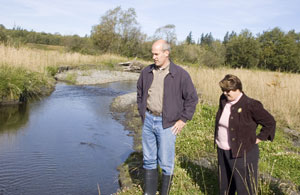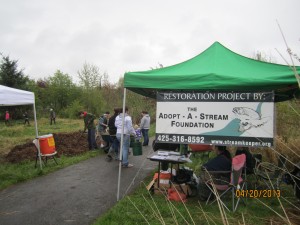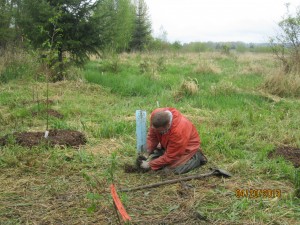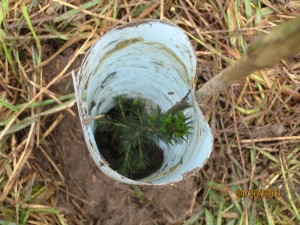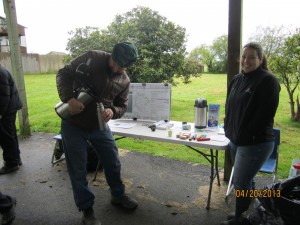By Dale Carson, Indian Country Today Media Network
Lenonah and her family lived by a wide creek; they had all the water and natural foods they needed to survive and be happy. Lenonah was known for her beautiful, long, almost black hair and for her very good foraging skills. She could pick baskets and baskets full of berries faster than her sisters and her mother.
There were many berry-pickin’ places near their lodge, and the girls knew them all, except for a couple only Lenonah knew about. Lenonah was quite fond of wild strawberries and ate most of what she picked. One day, her sisters noticed that her beautiful long hair was getting lighter and lighter—nearly red! They were worried, but Lenonah didn’t think anything of it. She thought it could only be the strawberries making this so.
In those times, humans and animals could speak to one another. She talked with her friends muskrat and frog about what was happening to her hair. Frog was not alarmed, but muskrat was concerned and told her she should stop eating so many berries. He thought her hair color would make it too easy for those who wished her harm to find her, or worse, her secret picking places. From that day on, she never ate another wild strawberry, but she always wanted to. One day she was foraging near one of her old secret wild strawberry places and saw a handsome young red-haired man in the middle of the patch. He waved to her. They saw each other again, many times and fell in love. He told her his hair had once been long and nearly black but he loved wild strawberries so much he couldn’t stop eating them. She told him of her talk with frog and muskrat and why she stopped eating her beloved wild berries. He said if she would marry him he would protect her and she could eat all the berries she wanted; he would love her whether her hair was black or red. They married and had many children and grandchildren. So every time you see people with strawberry red hair, think of Lenonah, her husband and their happy life near a strawberry patch.
Strawberry Leaf Tea
Pick leaves from the strawberry plant late in the summer. Put them on paper towels on a screen and dry in the sun or a 125-degree oven overnight. When thoroughly dry, crumble the leaves and put in a clean airtight container.
My own grandmother swore they would cure anything, especially a cold. They contain a lot of vitamin C, so she may have been right. The tea likes to be sweetened with honey. The Wampanoag word for strawberry leaves is wuttahimnasippa-quash.
Strawberry Bread Pudding
This is a VERY rich dessert and wonderful for special occasions as a memorable treat. First is the pudding recipe; the sauce recipe follows.
4 eggs
1 cup sugar
½ cup honey
½ teaspoon cinnamon
¼ teaspoon nutmeg
½ teaspoon salt
2 cups heavy cream
1 cup whole milk
6 cups day old bread, cubed
2 cups strawberries, hulled
Sauce:
1 cup heavy cream
3 egg yolks
¼ cup real maple syrup
Pinch salt
Bring sauce ingredients to a boil in a small saucepan over medium heat. Stir constantly. Remove from heat, put pan in a larger pan of ice water to cool.
Preheat oven to 325 degrees. Use a large bowl to mix eggs, sugar, honey, spices, salt and cream. Fold in the bread and let it set for 15 minutes. Pour this into a greased 9X13-inch cake pan and gently fold in the strawberries. Cover with foil. Bake 45-50 minutes. Let cool. Serve the sauce on the side or pour over individual servings.
Dale Carson, Abenaki, is the author of three books: New Native American Cooking, Native New England Cooking and A Dreamcatcher Book. She has written about and demonstrated Native cooking techniques for more than 30 years. Dale has four grown children and lives with her husband in Madison, Connecticut.
Read more at http://indiancountrytodaymedianetwork.com/2013/04/20/traditional-story-picking-strawberries-redheads-and-love-148866


